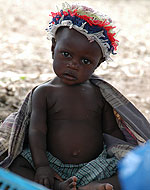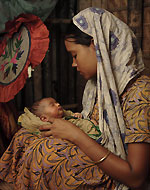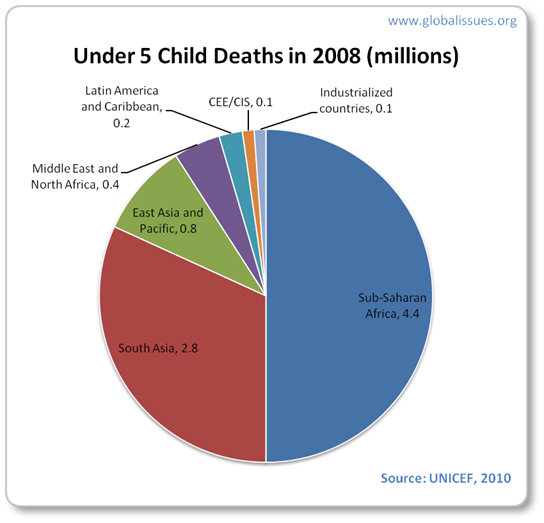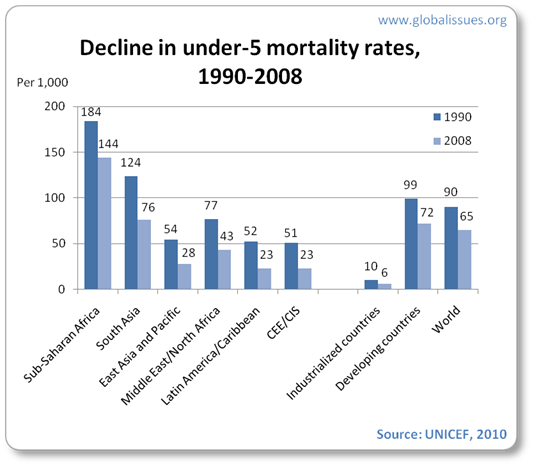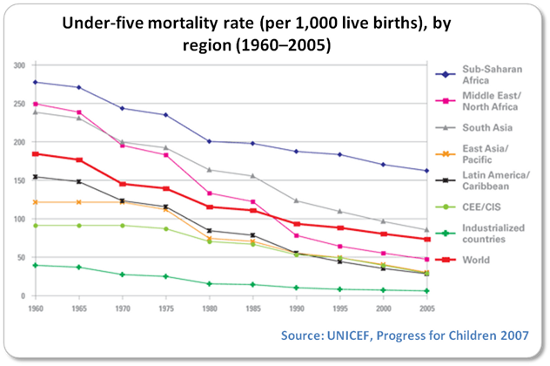Poverty can be defined in many different ways. Some attempt to reduce it to numbers, while others argue that a more ambiguous definition must be used. In the end, a combination of both methods is best. Today, most economists and social workers use two ways to define poverty.
Social Definitions of Poverty
Some people describe poverty as a lack of essential items – such as food, clothing, water, and shelter – needed for proper living. At the UN’s World Summit on Social Development, the ‘Copenhagen Declaration’ described poverty as “…a condition characterised by severe deprivation of basic human needs, including food, safe drinking water, sanitation facilities, health, shelter, education and information.” When people are unable to eat, go to school, or have any access to health care, then they can be considered to be in poverty, regardless of their income. To measure poverty in any statistical way, however, more rigid definitions must be used.
Top
Top
Statistical Definitions of Poverty
 |
| A Bengali carpenter working. Poor workers in developing countries can lead very insecure lives - a single unforseen event can drive them into poverty. |
While there are various numerically defined methods to measure and quantify poverty, two are simple enough that they are often used to define poverty (other methods are examined in the Measuring Poverty I and Measuring Poverty II sections of this site), relative poverty measurement and absolute poverty measurement. Both are based on income or consumption values making gathering information to compile statistics on poverty much easier.
Top
Top
Relative Poverty
Slideshow:
A Journey Through Poverty: View photos and read observations about poverty from a team member who traveled in Bangladesh, a developing nation in Southeast Asia.
Note: Requires Flash Player.
A Journey Through Poverty: View photos and read observations about poverty from a team member who traveled in Bangladesh, a developing nation in Southeast Asia.
Note: Requires Flash Player.
Relative poverty measures are the simplest ways to determine the extent of poverty in individual countries. Using this method, the entire population is ranked in order of income per capita. The bottom 10% (or whatever percentage the government chooses to use) is then considered ‘poor’ or ‘impoverished.’ This can be fine for country-wide measurements, but it has some major drawbacks in global use. If, say, a 10% relative poverty measurement was applied in a global setting, it would appear that both an industrialized country, such as the U.S., and a sub-Saharan African country had the same 10% poverty rate, even though the conditions of the poor in sub-Saharan Africa are much worse than conditions in the U.S. For this reason, absolute poverty measures are more often used to define poverty on a global scale.
Top
Top
Income vs. Consumption
 |
| A worker breaks bricks to make gravel for use on a road - the job pays around $1 per day. |
Before absolute poverty measures can be used to define poverty, researchers must first determine if they want to measure income amounts or consumption amounts. Income refers to the amount of money someone makes, while consumption refers to the monetary value of the goods that person actually consumes. If you earn $4 a day, but are able, through other means, to consume $5 a day, then your yearly income would be $1,440, but your yearly consumption would only be $1,860. The differences can be significant, because depending on their situation poor people may be able to get goods for less. While it might appear at first glance that income and consumption are the same, closer examination reveals that income is just one factor, albeit a large one, which determines consumption amounts.
Top
Top
Absolute Poverty
Absolute poverty measures set a ‘poverty line’ at a certain income amount or consumption amount per year, based on the estimated value of a ‘basket of goods’ (food, shelter, water, etc.) necessary for proper living. For example, if $5 a day is determined to be the income poverty line in a country, then anyone with an income of less than $1860 would be considered impoverished. If instead a poverty line based on consumption was used, anyone consuming goods with a monetary value of less than $1860 would be in poverty.
 |
| Many impoverished people engage in agricultural jobs. Some are 'subsistence farmers,' and are barely able to produce enough food to stay alive. |
Note:
In reality, the current ‘$1 a day’ poverty line is $1.08 (the ‘$2 a day’ line is $2.15) in 1993 U.S. dollars, adjusted for Purchasing Power Parity. Read More...
In reality, the current ‘$1 a day’ poverty line is $1.08 (the ‘$2 a day’ line is $2.15) in 1993 U.S. dollars, adjusted for Purchasing Power Parity. Read More...
As of 2001, 1.1 billion people, or 21% of the 2001 world population, had incomes less than the World Bank’s ‘$1 a day’ line for extreme poverty. 2.7 billion people had incomes less than the World Bank’s ‘$2 a day’ line for poverty. While this is a decline from past years (in 1981, there were 1.5 billion people in extreme poverty), it still means that almost one-half of the world’s population lives in poverty, mainly in sub-Saharan African and South Asia.
Top
Top
Empowerment
Kathleen McHugh on Poverty:
"Poverty should be defined by an individual's inability to affect change in their lives..." - Kathleen McHugh, 'Save the Children'
"Poverty should be defined by an individual's inability to affect change in their lives..." - Kathleen McHugh, 'Save the Children'
One other factor many experts on poverty talk about when they talk about defining poverty is empowerment. 'Empowerment' refers to the ability of an individual to make choices regarding his or her life. Often, the poor are not empowered - they are forced to work at certain jobs or do certain things, and often, this state of existence can be linked to poverty. When people are disempowered, many times, they are in poverty.
Top
Top
Sources
2005 HHS Poverty GuidelinesBell, Peter. Telephone Interview. 19 December 2005.
Gilbert, Geoffry. World Poverty. Santa Barbara: ABC-CLIO 2004
Reddy, Sanjay G. How Not to Count the Poor. Columbia University, 2005.
McHugh, Kathleen. Telephone Interview. 5 January 2006.
UN World Summit on Social Development
U.S. Census Bureau Small Area Income & Poverty Estimates
Wikipedia: Poverty
Wikipedia: Poverty Line
Wikipedia: Purchasing Power Parity
World Bank: PovertyNet: Overview





